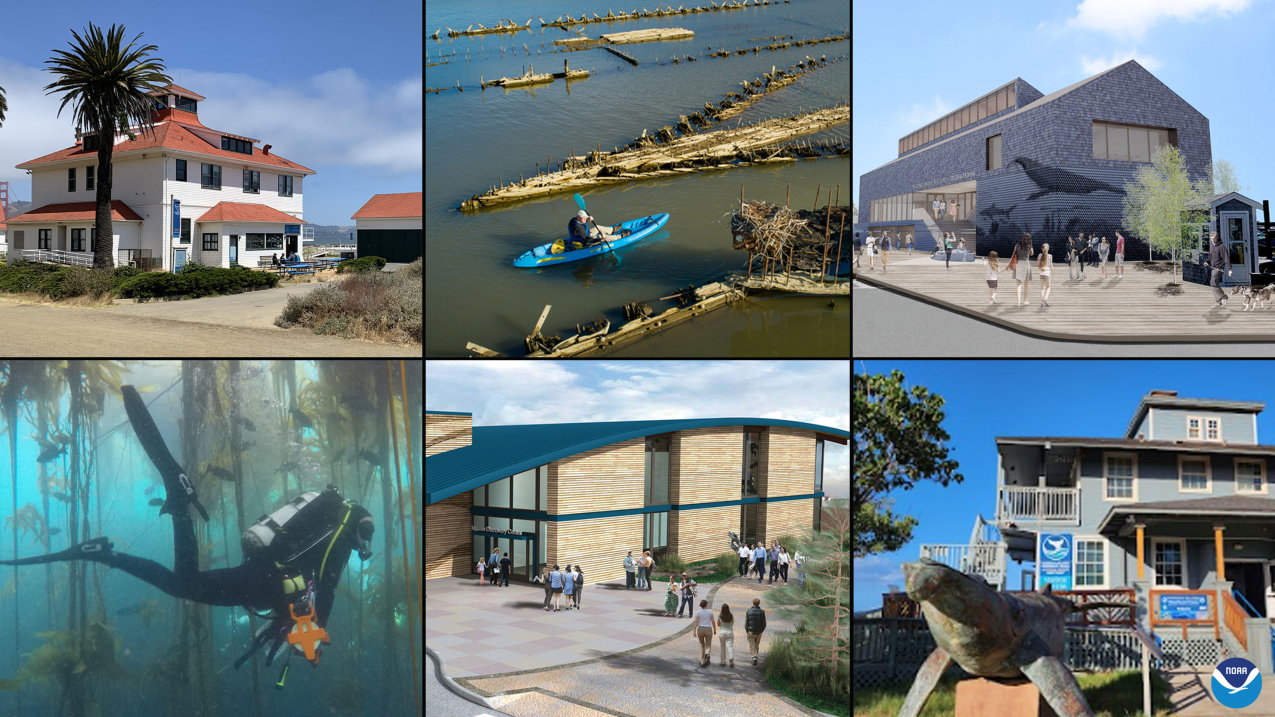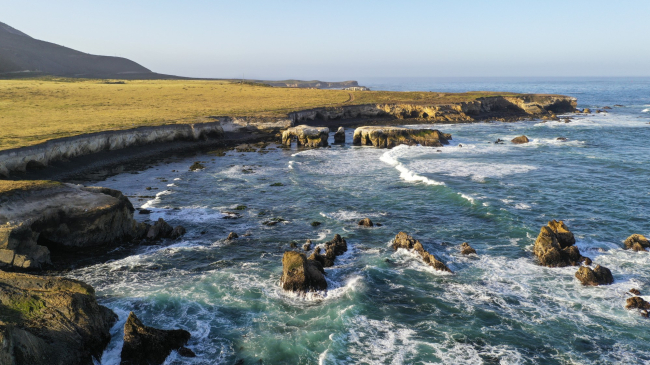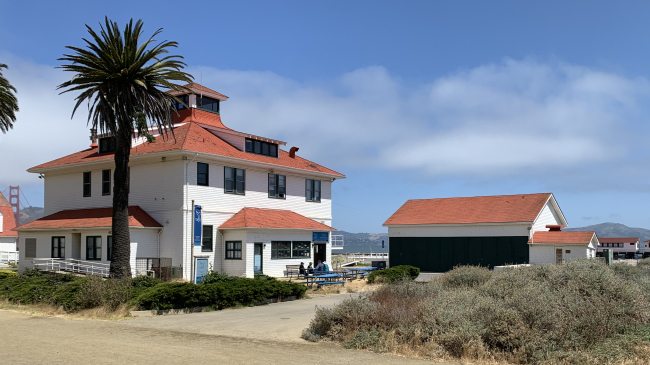Funding from Inflation Reduction Act to support facilities improvements, inclusive access to visitor experiences and public education

A nearly $50 million investment from the Inflation Reduction Act will go towards infrastructure improvements for facilities at six national marine sanctuaries across the country. From top left to right, clockwise: Greater Farallones and Cordell Bank, Mallows Bay-Potomac River, Stellwagen Bank, Olympic Coast, Monterey Bay and Hawaiian Islands Humpback Whale National Marine Sanctuaries. (Image credit: NOAA)
Today, the Department of Commerce and NOAA announced it will invest nearly $50 million from the Inflation Reduction Act to make infrastructure improvements to facilities at six national marine sanctuaries across the country. The National Marine Sanctuary System protects some of the most iconic underwater places throughout the United States, and these investments will make the facilities, including visitor and community centers, more resilient to climate change, improve the facilities’ capacity to engage in research and conservation, and help NOAA inspire the public to be good stewards of our coasts, Great Lakes and ocean.
“NOAA’s national marine sanctuaries facilities are a gateway to our greatest underwater treasures — and key to maintaining them,” said U.S. Secretary of Commerce Gina Raimondo. “This funding will help ensure facilities are resilient in a changing climate, and represent President Biden’s commitment to investing in America and furthering the conservation and restoration of our coasts and Great Lakes.”
“NOAA’s facilities — many of which are located along the coast and Great Lakes — are not immune from climate hazards,” said NOAA Administrator Rick Spinrad, Ph.D. “This funding from President Biden’s Investing in America agenda will strengthen NOAA’s sanctuary facilities so they are prepared for climate change, and able to better serve visitors as they explore and learn about our ocean and coasts.”
“This investment in the future of national marine sanctuaries could not have come at a better time as many of our sanctuaries have a backlog of infrastructure and deferred maintenance projects,” said John Armor, director of NOAA’s Office of National Marine Sanctuaries. “This funding will improve access at facilities across the country, enhance climate resilience, and help us create a sense of shared stewardship for America's most iconic natural and cultural marine resources.”
Learn more about how NOAA’s Office of National Marine Sanctuaries is prioritizing investments from the Inflation Reduction Act to support facilities repairs, enhancements and new construction at the following sanctuaries:
Greater Farallones and Cordell Bank National Marine Sanctuaries
San Francisco, California
NOAA intends to invest $2 million to help repair and upgrade NOAA’s office and visitor center. This facility is located in a historic lifeboat station at Crissy Field, managed in cooperation with the National Park Service. This investment would help increase public awareness of the sanctuary and support the local tourism economy.
Hawaiian Islands Humpback Whale National Marine Sanctuary
Kīhei, Hawaii
NOAA intends to invest $17 million to help build climate resilience in the Kīhei, Maui visitor and community center, and mitigate threats from upland flooding, powerful storms and sand inundation. Funds would also support construction of a boathouse for the sanctuary’s 38-foot boat Koholā that is used for large whale research and entanglement response.
Mallows Bay-Potomac River National Marine Sanctuary
Nanjemoy, Maryland
NOAA intends to invest $5 million to support the design of a staff office and visitor center for the recently established Mallows Bay-Potomac River National Marine Sanctuary. These facilities would help the sanctuary conduct day-to-day operations from an efficient location, and enable recreation, education and community benefits provided by sanctuary management. When built, the new visitor center will connect other local and regional recreation and heritage tourism opportunities, and is expected to be accessible by public transportation to allow for broad public access.
Monterey Bay National Marine Sanctuary
Seaside, California
NOAA intends to invest $7 million to support construction of an office space for the Monterey Bay National Marine Sanctuary, which NOAA intends to locate in a new science building at the California State University Monterey Bay campus. The new office facility would mirror productive co-location arrangements between NOAA and the University of California campuses in Santa Barbara, San Diego and Santa Cruz, and would enhance collaboration with California State University Monterey Bay on programs such as seafloor mapping, kelp forest restoration, agriculture businesses and sustainable tourism.
Olympic Coast National Marine Sanctuary
Port Angeles, Washington
NOAA intends to invest $3 million to support the construction of a new marine discovery center in Port Angeles, Washington. NOAA intends to collaborate with the Feiro Marine Life Center offsite link to make the marine discovery center a central feature of the new Port Angeles Waterfront Center campus.
Stellwagen Bank National Marine Sanctuary
Provincetown, Massachusetts
NOAA intends to invest $15 million to support the construction of a new visitor center for Stellwagen Bank National Marine Sanctuary in Provincetown, Massachusetts. The visitor center would feature interactive exhibits describing sanctuary wildlife, historical shipwrecks and environmental resources — helping educate visitors about the sanctuary and the region’s marine environment. The center would provide the town with an opportunity to improve the waterfront area, which also includes a transportation center, and provide other amenities, such as a new comfort station, for tourists visiting Provincetown. It would also support businesses that provide access to the marine resources in the sanctuary and serve as a focal point for tourism in Provincetown.
NOAA’s $3.3 billion investment from the Inflation Reduction Act enables the agency to build on its commitment to help Americans — including tribes and vulnerable populations — prepare, adapt and build resilience to weather and climate events; improve supercomputing capacity and research on weather, oceans and climate; strengthen NOAA’s hurricane hunter aircraft and fleet; and replace aging NOAA facilities. Stay updated about NOAA’s Inflation Reduction Act investments.
Media contacts
Kate Silverstein, katherine.silverstein@noaa.gov, (202) 603-9651
Vernon Smith, vernon.smith@noaa.gov, (240) 638-6447



